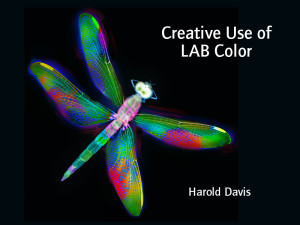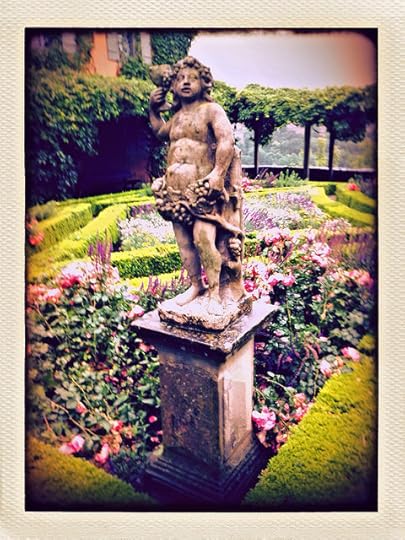Harold Davis's Blog, page 177
July 15, 2014
Creative Use of LAB Color Webinar
Please consider joining Harold Davis for this exciting, new live webinar offering that will help you unlock the creative potential of floral imagery (and more)!
Saturday, July 26, 2014 at 3PM PT: Creative Use of LAB Color (the cost is only $29.95, and includes unlimited access to the post-session recording)
Understanding the creative use of LAB color in Photoshop unlocks a vast treasure trove of under-utilized and under-explored possibilities.
This webinar explains the structure of LAB color, and demonstrates inversions and LAB equalizations for both image optimization and creative fun.
You will learn how to combine Blending Modes with LAB equalizations for an unlimited and powerful palette.
The Creative Use of LAB Color with Harold Davis webinar covers:
Understanding LAB Color
LAB Color in Photoshop
LAB Channel Inversions
LAB Channel Equalizations
Combining adjustments with blending modes
Creative LAB in a workflow
Examples and case studies
Learn how LAB is structured in Photoshop, and how to use the incredible toolkit that LAB unleashes to add a world of practical and creative effects to your imagery.
Each live webinar session has ample time for questions and is limited to twenty participants, so seating is very limited. The $29.95 fee includes unlimited access to the recording of the session.
Photoshop layers throwing you for a curve? You may also be interested in our upcoming (Saturday, August 16, 2014) live session, Photoshop Layers 101, with Harold Davis. Demystify Photoshop for once and for all.
Check out our webinar recordings ($19.95 each for unlimited access):
Painting in Transparency using a High-Key Layer Stack
Using Backgrounds and Textures
Selective Sharpening with LAB Color
Click here for more info about Harold Davis webinar recordings.

Afternoon of the Faun
July 13, 2014
Speyer Cathedral Dome
I spent my last night in Germany at a hotel near Frankfurt airport in a somewhat depressing industrial neighborhood. A few blocks from the hotel I found a nice place for dinner, and ate outside at the communal tables. While I waiting for my food I worked on this photo of the Speyer Cathedral Dome.
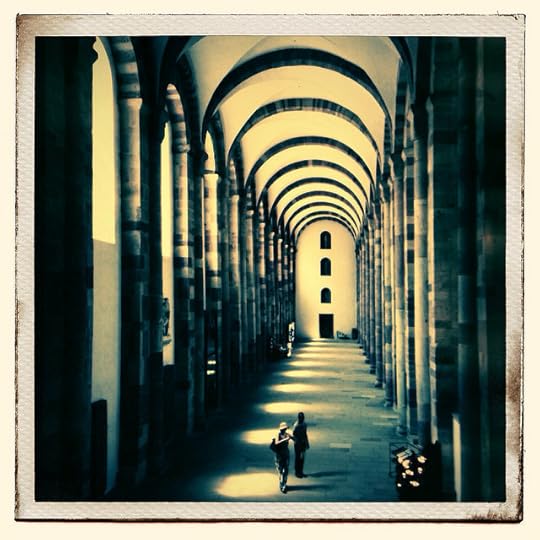
Speyer Dome © Harold Davis
The interior space in the Cathedral in the imperial city of Speyer, Germany is built to a huge scale. Although mostly reconstructed rather than original, the sheer magnitude of interior volumes is worth experiencing, and this city along the Rhine River is steeped in history.

July 8, 2014
Heidelberg Student Jail
Mostly aristocratic students at Heidelberg University were not under the jurisdiction of the normal authorities. The University handled disciplinary matters. Facilities in the old University buildings included a jail (now a museum), with one of the cells shown here.
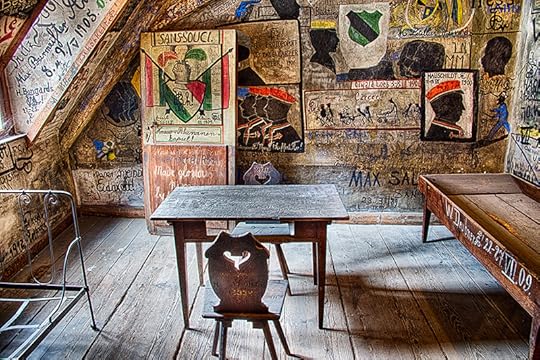
Heidelberg Student Jail © Harold Davis
For the most part, sojourns in the Heidelberg student jail were the result of frat-boy pranks, and treated as something that was part of the accepted tradition of student behavior. Part of the tradition was to add one’s name and maybe some art—so in later years as a “good old boy” one could come back and point to the scene of one’s incarceration.
It was all one big lark. But making things a little more poignant, note that I photographed the cell shown here in a state of “arrested decay” (just as I did with the California ghost town of Bodie in Arrested Decay and Gone with the Wind). At the Heidelberg Student Jail, “arrested decay” means most of the carvings and painting date from the decade before the first World War—where many of these pranksters must have perished.
Special thanks to Francis, who showed me the jail and explained its background.

Castle Stairs and Glass with Candle
It was a rainy drive from Heidelberg to Aalen, Germany. Once I got off the autobahn, the countryside was lush with moisture, but going was slow. I stopped for lunch in a small town, and ate at an informal place across from the train station with German food but a Greek chef and Greek music.
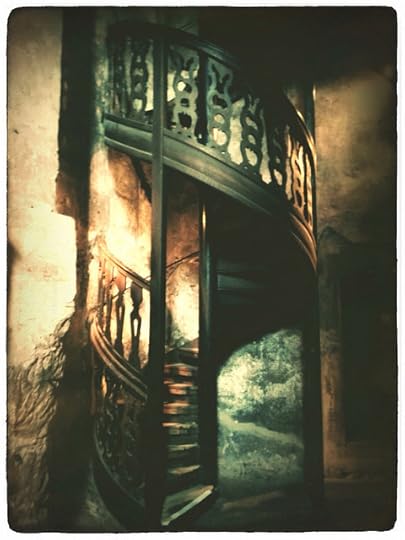
Castle Stair © Harold Davis
While I waited for my food to arrive I processed the two images shown here. The image above is of a spiral staircase in the castle at Heidelberg. The staircase happens to be next to a giant beer barrel. Go figure! I always say, grab your photos where you find them—even if it means ignoring context, such as one of the world’s largest beer barrels.
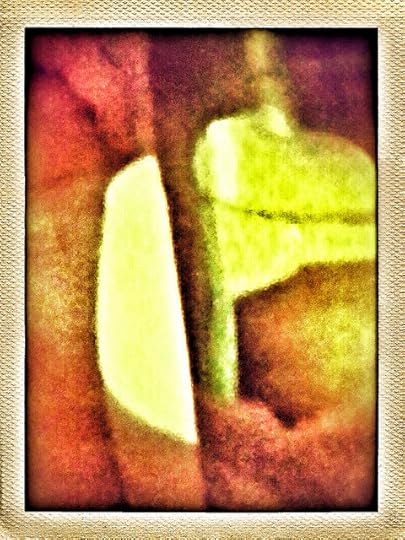
Glass with Candle © Harold Davis
The image above was shot at a meal a few days ago, and is an abstraction of a candle refracted in a drinking glass, as you’ll see if you look carefully. The glass was green and held some kind of fancy drink. The shape of the green glass occupies the rights side of the image.

July 6, 2014
Deux Chevaux Engine
The Citroen C2V was fondly known as the “deux chevaux,” or two horses, after its putative power. Actually, the C2V engine has something like twenty horse power, and this is a car that is fondly remembered by many. Macho car it was never, more cute and cuddly, and therefore fun to give its engine a full HDR treatment with a bracketed exposure sequence. Thanks to Primo, who pulled it out in his garage so we could photograph it!

Deux Chevaux Engine (color) © Harold Davis
Do you prefer the color or the black and white version?
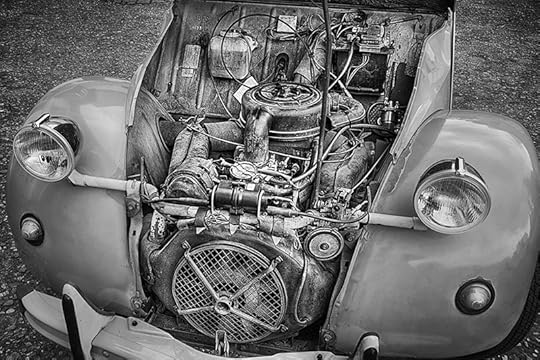
Deux Chevaux Engine (black and white) © Harold Davis

July 5, 2014
Stairs in the Heidelberg University Library
With a few of the students in my Black & White workshop I headed into the ornately decorated Heidelberg University Library. We asked if we could photograph in the library book stacks. No, we could not: approval by a higher authority was needed. The “higher authority” was not currently available.
On the way back out of the library building we found these stairs. Proving once again that you don’t always get what you want, but if you are open to the adventure sometimes you get what you need.
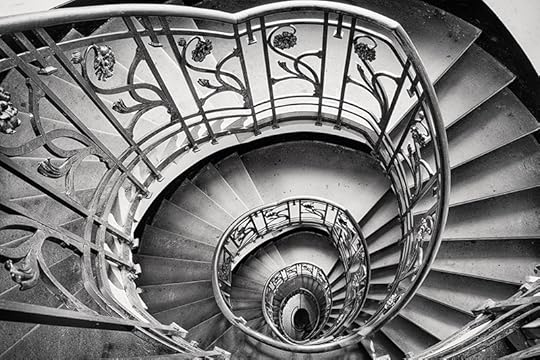
Stairs, Heidelberg University Library © Harold Davis
The image above is looking down the stairs. Here’s one in the opposite direction, looking up:
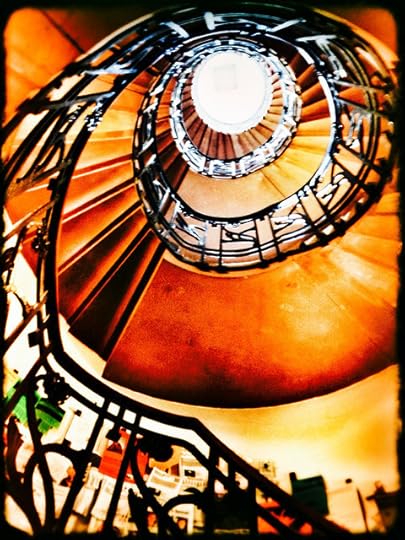
Heidelberg Library Stairs © Harold Davis

Girl in a Blue Dress
I set my camera up on a tripod and framed a sidewalk with some windows and a bicycle in old Heidelberg, Germany, waiting for pedestrians to come by. It was afternoon, but still quite bright. I dialed the ISO all the way down (to ISO 50) and stopped the lens all the way down to its smallest opening (f/25). This yielded a shutter speed (shutter speed is not really a speed, and is more coherently described as “the duration of time the shutter is open” ) of 1/5 of a second. The idea was to make the exposure as long as possible to display the motion of any humans that entered the frame as a blur.
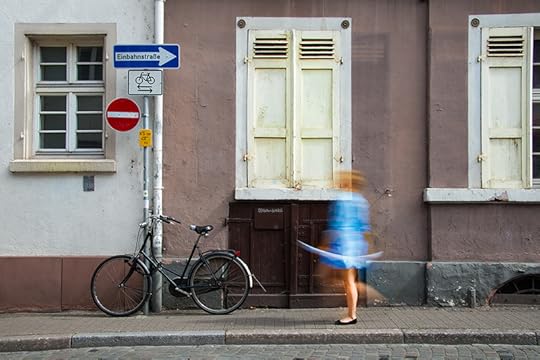
Girl in a Blue Dress © Harold Davis
With this kind of photography, you have to take many shots to get a good one. Fortunately, a pretty girl in a blue dress came along without too much delay, and did a nicely positioned twirl in my frame, leading to an elegant motion blur.

July 3, 2014
Maulbronn Monastery
Maulbronn Monastery, Kloster Maulbronn in German, is the best-preserved medieval Cistercian monastery in Europe. It is a World Heritage Site. Happening to get there so soon after my visit to the Cistercian monastery in Cadouin in the south of France is a wonderful coincidence, and I will explain how it happened in a future post (thank you Dieter and Gerhard!).

Church Ceiling, Maulbronn Monastery © Harold Davis
Maulbronn Monastery was founded in 1147, the first example of Gothic architecture in Germany. The ceiling of the church partially shown in this photo is presumably from a somewhat later period of construction.


